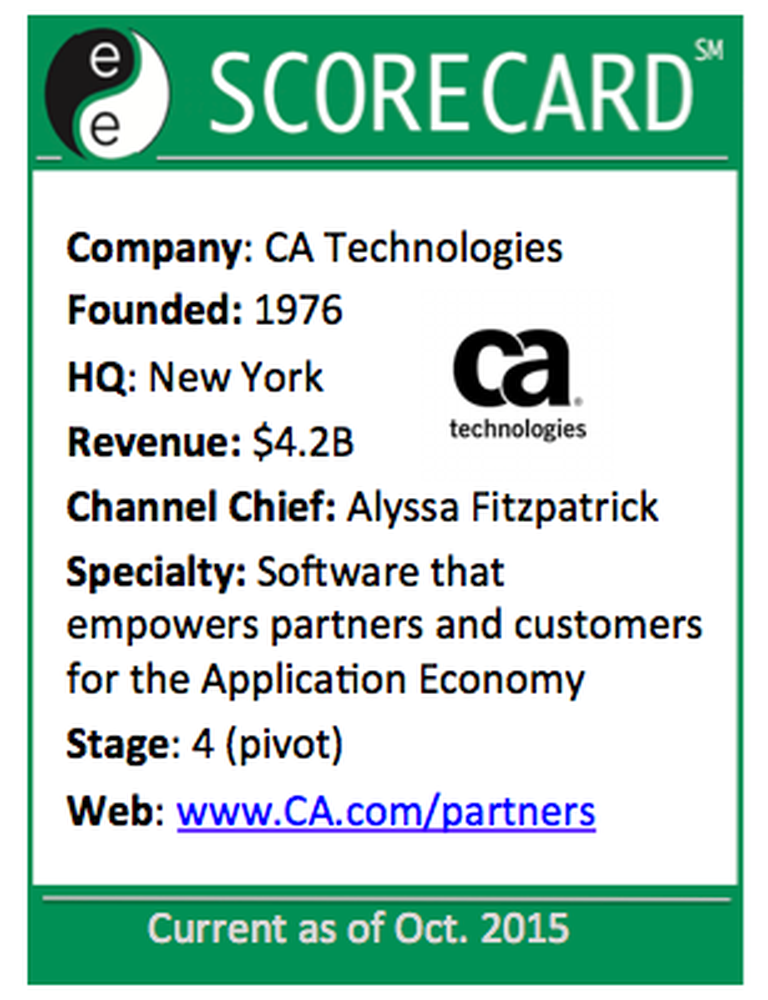During each new technology wave, hardware innovations typically reach the customer shoreline first. But ultimately, the real business magic starts when software innovations pull into port. It was true way back in the mainframe era. And it's true now, in the age of hybrid cloud and mobile computing.

- The Client-Server Wave: x86 PCs and servers paved the wave for low-cost client-server solutions. But as hardware margins fell, the real victors were application experts.
- The eBusiness, Web and Social Waves: Network connectivity -- routers, switches and WiFi -- provided the foundation. Technical standards like TCP/IP and HTTP redefined how software could be delivered. And then the real innovation -- browser-centric applications -- arrived.
- The Hybrid Cloud and Mobile Waves: Low-cost Infrastructure as a Service (IaaS) and smart devices extended then eliminated the boundaries of corporate networks. Now, just about everybody has access to the same low-cost infrastructure and app stores. The only way to differentiate? At the application level.
Or as CA Technologies tells its partners: "More than ever, the success of your clients is tied to applications. The faster they can innovate their applications, the faster they can respond to changing customer demands, emerging opportunities and competitive threats."
The Team Behind the Message
Of course, CA's march toward the Application Economy wasn't an overnight endeavor. So far, the journey has included such executive hires as:
- CEO Michael Gregoire, a PeopleSoft and Taleo veteran, arrived in December 2012;
- Chief Marketing Officer Lauren Flaherty arrived from Juniper in July 2013;
- Senior VP Alyssa Fitzpatrick joined as channel chief from McAfee in January 2014; and
- Cisco veteran Ayman Sayed joined as chief product officer in August 2015.
Like any company, new arrivals also meant some departures. Several key names I've known -- within CA's service provider team -- have moved on, though experts like Ken Vanderweel are still driving the MSP effort forward. Moreover, CA has exited some businesses -- including the 2014 sale of the ARCserve line.
 Alyssa Fitzpatrick
Alyssa FitzpatrickAnd what of the partner program? Instead of rushing into partner program changes, Fitzpatrick spent her first three months at CA listening to partners and learning how the company operated. Sure, CA had three decades of history -- and processes -- in the mainframe and client-server markets. But the company also has a range of next-generation software for service providers and more traditional channel partners. Moving all of those offerings forward -- in an application-centric way across the channel -- wouldn't be easy.
A Techie At Heart
Still, Fitzpatrick's background involves plenty of application and hands-on coding experience. She earned her degree in computer science from University of Washington, where she immersed herself in artificial intelligence and programming. (Go ahead, ask her about AI movies like Ex Machina.)
But don't underestimate her business acumen -- and partnering experience. It all extends back to a consulting role at Accenture (Andersen Consulting at the time) in the early 1990s, which allowed Fitzpatrick to partner up with Siebel Systems.
For the next two decades, Fitzpatrick dove deeper and deeper into the world of strategic IT alliances -- often at the application and software level. Her two-decade career journey -- from early management, to VP and senior VP roles -- has spanned Oracle, SeeBeyond, webMethods, Informatica, McAfee and now CA Technologies.
"I learned the 'Power of Two' very early on," Fitzpatrick told ChannelE2E in a recent interview. "With partnering, you take the power of two companies and leverage each other for the greater good of the customer."
Think about that for a minute. At a time when many channel chiefs are trying to figure out application-level relationships -- across ISVs and channel partners -- Fitzpatrick has already spent two decades building and managing those types of relationships.
Market Challenges and Opportunities
Still, CA Technologies has faced growth challenges in recent years. The shift from mainframe and enterprise software licensing deals to subscription-based engagements has been challenging. And the company's journey from a direct sales heritage toward greater partner engagements won't be easy.
"My experiences prepped me for this challenge," Fitzpatrick says. "And frankly, we realized that the company itself had to change before we could build and execute a modern route-to-market strategy."
Generally speaking, CA's direct sales team engages Fortune 500 customers today, while extending down a bit down into the Global 2000.
"As you get into the Global 2000, that's where partners are really helping customers with their business transformation process. There, the partners and customers want guidance and mix of technologies from CA," Fitzpatrick says. "Once you extend beyond the Global 2000 down into SMB that's where we don't really have customers today. But we aspire to have them. That’s a 100 percent partner segment. Our expectation has been to offer partners a model there so that they can go and sell to those customers without conflict. It's their place to play."
Partnering Around Four Key Pillars
To engage partners for the long haul, Fitzpatrick realized she had to triangulate a few variables. For instance:
- CEO Mike Gregorie and the company's R&D team were working to overhaul CA's approach to software development. To reach new customer segments, CA's applications had to be modern, easy to install, easy to consume, portable and multi-tenant.
- Chief Marketing Officer Lauren Flaherty had to simplify the company's software branding and marketing -- which spans hundreds of products and solutions.
- And CA's sales team had to increasingly shift to subscription-based selling.
On the branding and organization front, CA vastly simplified the conversation. Indeed, the company organized its offerings into four key software portfolios -- a.k.a. four technology pillars. They are, in CA's words:
- CA Intellicenter: Solutions that offer a holistic view of IT portfolio investments, services and assets.
- CA Devcenter: Solutions that accelerate application delivery with test-driven development and continuous validation.
- CA Opscenter: Solutions that optimize the performance and availability of applications and infrastructure to drive customer satisfaction.
- CA Securecenter: Solutions that provide convenience, secure access for the right users to the right applications, on any device, from anywhere.
Take a closer look at those four key pillars. You'll notice that they reinforce the application economy message. As a whole, the pillars are designed to help channel partners and service providers as they develop, manage, optimize and safeguard applications -- whether they're on premises, in the public cloud or hybrid in nature.
The Next Generation Partner Program
As CA's marketing, branding and R&D strategies came into focus, Fitzpatrick spent the first three months of 2014 in listen and discovery mode. Then, from April until around August 2014, she was in strategy mode, working to build consensus (across R&D, sales, support, legal and more) for forthcoming partner program moves. Every step of the way, she had to weigh key investments CA would need to make to "build for new SMB opportunities."
In 2014, Fitzpatrick emerged with a two-year battle plan -- divided into four waves, each of which was six months long. Many of the efforts went live on April 1, 2015 as part of CA's new fiscal year. Six months into the effort, CA recently launched new MSP and global system integrator efforts. And during the second half of the fiscal year -- under way now -- Fitspatrick will strive to address key nuances in the program.
For instance, the partner effort is essentially 75 percent the same across the global, but can be customized about 25 percent on a per-region basis to address localization needs. "Now that we've got six months under our belt, we can really optimize at the regional level," she says.
Fitzpatrick also sees blended roles for partners going forward. A few examples: Global Systems Integrators can now earn rewards for influencing deals. There are changes on the MSP front as well. Historically, CA treated MSPs as customers rather than partners. Going forward, MSPs will be treated more like partners -- guided by a global head for the MSP business, and supported by a business analyst.
"We’ve done a lot in terms of how we’ve changed our mentality," she says. "We've got a solid team executing. From a partner organization, we’re on track."
Partners Influencing R&D
Going forward, Fitzpatrick expects partners to play a stronger role in the way CA Technologies develops software.
"You'll find that we're making sure the voice of the partner influences our product roadmaps," she says. "Partners are wrapping their intellectual property around us. I want to harness that and bring that back to our R&D team. That’s my focus forward. It's all about execution, operations and injecting partner innovation into our R&D."
And the journey won't end there. Sure, Fitzpatrick's original partner plan involved a two-year roadmap. "We'll be adding goals and paths beyond the two years. And that’s exciting. The job will never be done. And it will be gratifying."
CA's partners will be able to measure Fitzpatrick's progress during CA World 2015 (Nov. 16-20). No doubt, the Application Economy will be center stage at the conference. And even CA would admit there's more work to be done.




